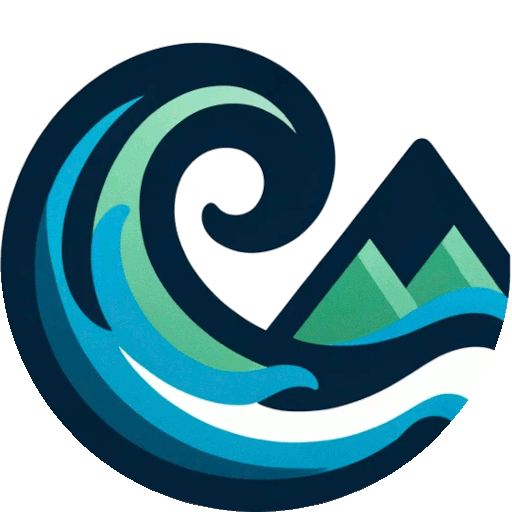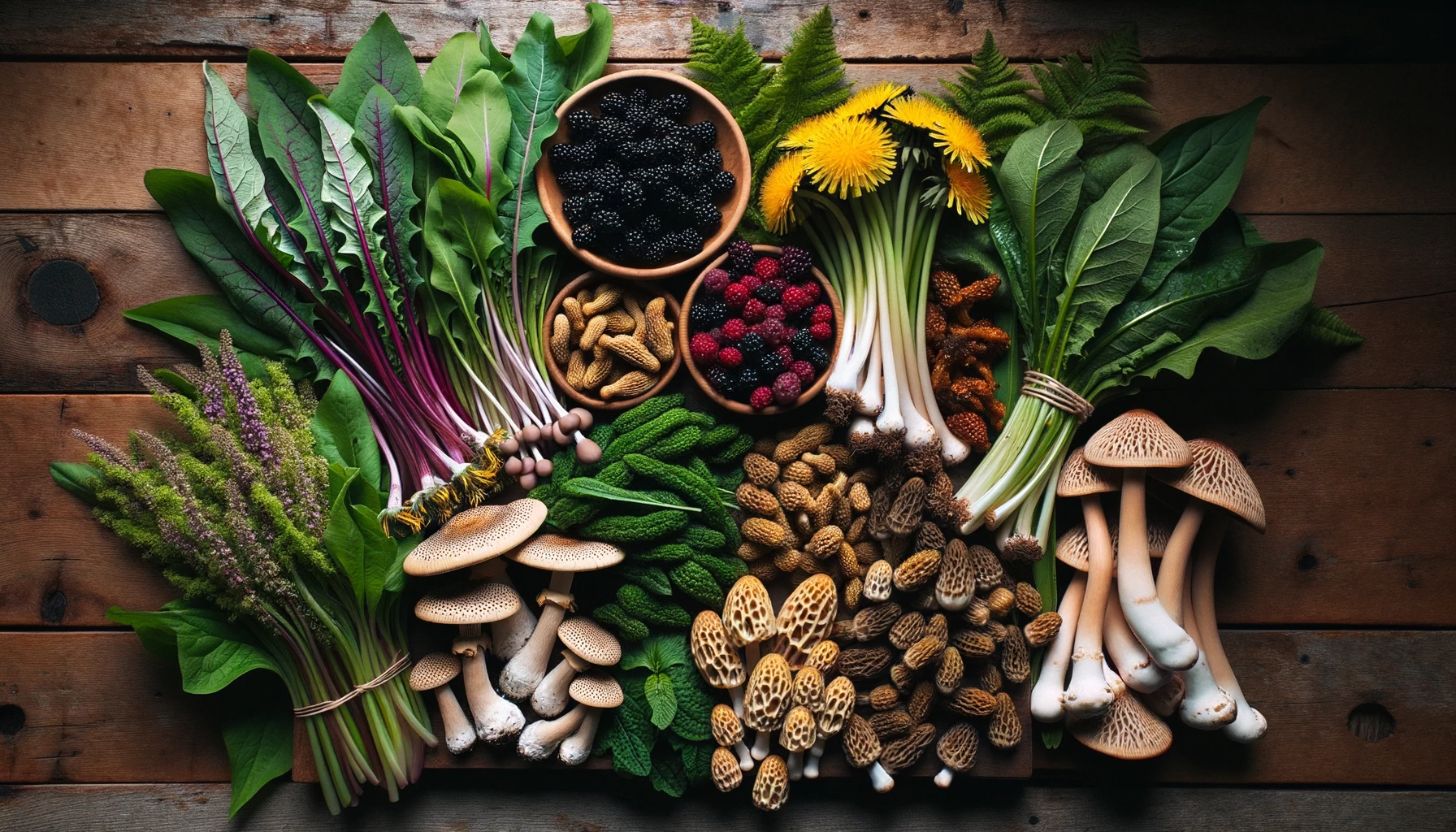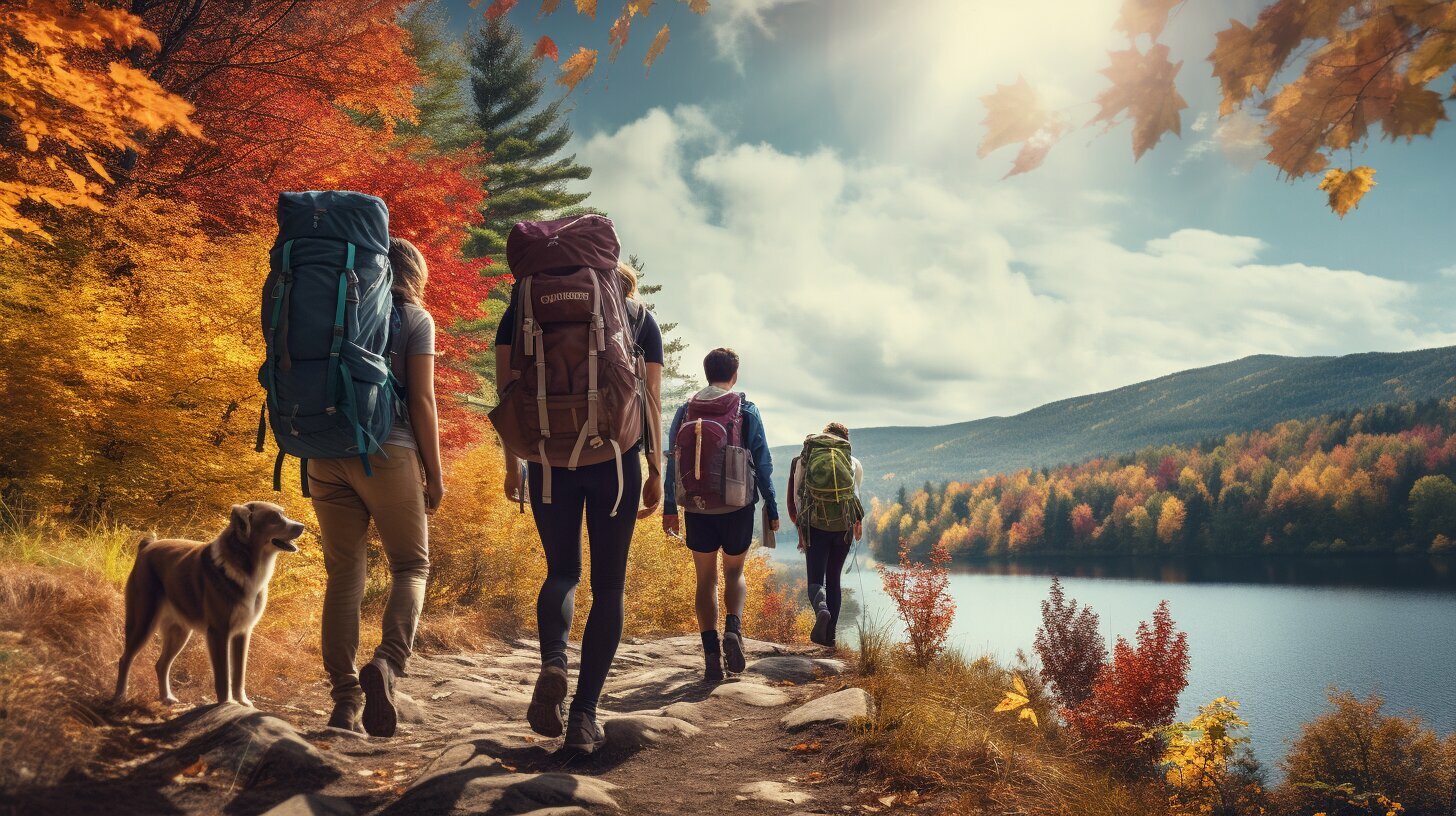If you’ve ever taken a stroll through nature or a hike in the woods, you may have come across a variety of plants and berries that you weren’t sure were safe to eat. While foraging for food may seem daunting at first, it can also be a thrilling and rewarding experience, providing a deeper connection to the natural world. In this ultimate guide, we’ll explore the art of identifying wild edibles in the United States, from common species to lesser-known gems.
Whether you’re an avid hiker, nature enthusiast, or simply interested in sustainable living, this guide will provide you with the essential knowledge and skills to confidently forage for food in the US.
Key Takeaways
- Foraging for food can enhance your outdoor experience and provide a deeper connection to the natural world.
- This guide will explore the art of identifying wild edibles in the United States.
- Learning to forage for food can be a thrilling and rewarding experience.
- This guide will provide essential knowledge and skills to confidently forage for food in the US.
- Whether you’re an avid hiker, nature enthusiast, or interested in sustainable living, this guide is for you.
The Basics of Foraging: Getting Started
Before you head out to forage for wild edibles, it’s important to understand the basics of foraging. Here are some tips and tricks to help you get started:
Identifying Safe Areas for Foraging
The first step in foraging is to find a safe area where you can collect wild edibles. Look for areas that are free from pollution and chemical contamination. National parks, forests, and other public lands are great places to start, but be sure to obtain any necessary permits beforehand. Avoid foraging on private property without the owner’s permission.
Disclosure: When you buy through links on our site, we may earn an affiliate commission.
Understanding Plant Parts
When foraging for wild edibles, it’s important to know what parts of the plant are safe to consume. In general, the leaves, stems, flowers, and fruits of a plant are the most commonly eaten parts. However, some plants have toxic parts, such as the roots, seeds, or bulbs, which can be harmful if ingested. Be sure to research each plant thoroughly before consuming any part of it.
Practice Ethical Foraging Techniques
Foraging can have an impact on the environment, so it’s important to practice ethical foraging techniques to minimize your impact and promote conservation. Some tips include:
- Only take what you need, and leave plenty of edibles for wildlife and future foragers.
- Avoid damaging the plant or its surrounding habitat when harvesting edibles.
- Respect any posted signs or guidelines regarding foraging in the area.
By following these tips and tricks, you can get started on your foraging journey with confidence and safety.
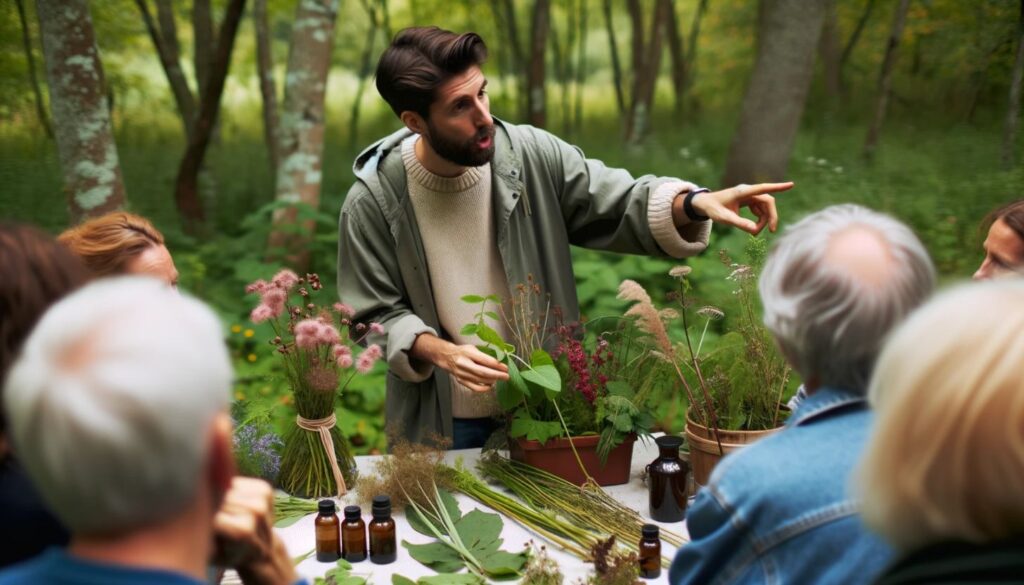
Identifying Wild Edibles in the US
When it comes to identifying wild edibles in the United States, it’s essential to start with the most common species. Below, you’ll find descriptions and photos of several edible plants, wild herbs, and fruits native to America.
Note: Before consuming any foraged plants, always make sure you have identified them correctly and they are safe for consumption.
| Plant Name | Description | Edible Parts |
|---|---|---|
| Milk Thistle | A purple-flowered herb with prickly leaves. | Leaves, flowers, roots. |
| Dandelion | A yellow-flowered weed found in fields and lawns. | Leaves, flowers, roots. |
| Blackberry | A thorny bush with edible, juicy fruit. | Fruits. |
| Wild strawberry | A small, low-growing plant with white flowers and red fruit. | Fruit. |
Milk Thistle, Dandelion, Blackberry, and Wild strawberry
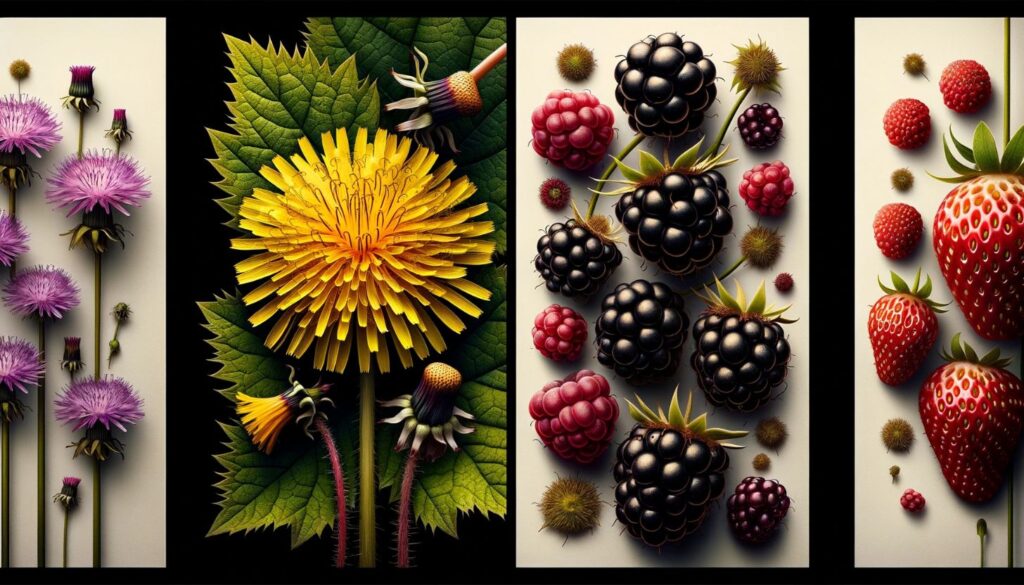
These are just a few examples of the many edible plants, herbs, and fruits that can be found in the wild. Learning to identify these common species is a great start, but there are many more lesser-known wild edibles to discover, which we’ll cover in the next section.
Foraging Safety: Poisonous Plants to Avoid
While foraging for wild edibles can be a fun and fulfilling experience, it’s important to be cautious as not all plants are safe to consume. There are poisonous plants that can cause serious harm or even death when ingested. Therefore, it’s crucial to be able to identify these plants and avoid them. In this section, we’ll go over some common poisonous plants that you may come across while foraging in the United States.
Poison Ivy
One of the most well-known poisonous plants is poison ivy. This plant contains an oil called urushiol, which can cause a painful, itchy rash when it comes into contact with the skin. Poison ivy grows as a vine or a shrub and has leaves that are clustered in groups of three. The leaves are glossy and can be green or reddish in color, depending on the season. If you come into contact with poison ivy, wash the affected area with soap and water immediately.
Poison Oak
Similar to poison ivy, poison oak also contains urushiol and can cause a rash when touched. Poison oak has leaves that are clustered in groups of three and have a lobed shape. The leaves can be green or yellow in color, and the plant can grow as a shrub or a vine. If you come into contact with poison oak, wash the affected area with soap and water immediately.
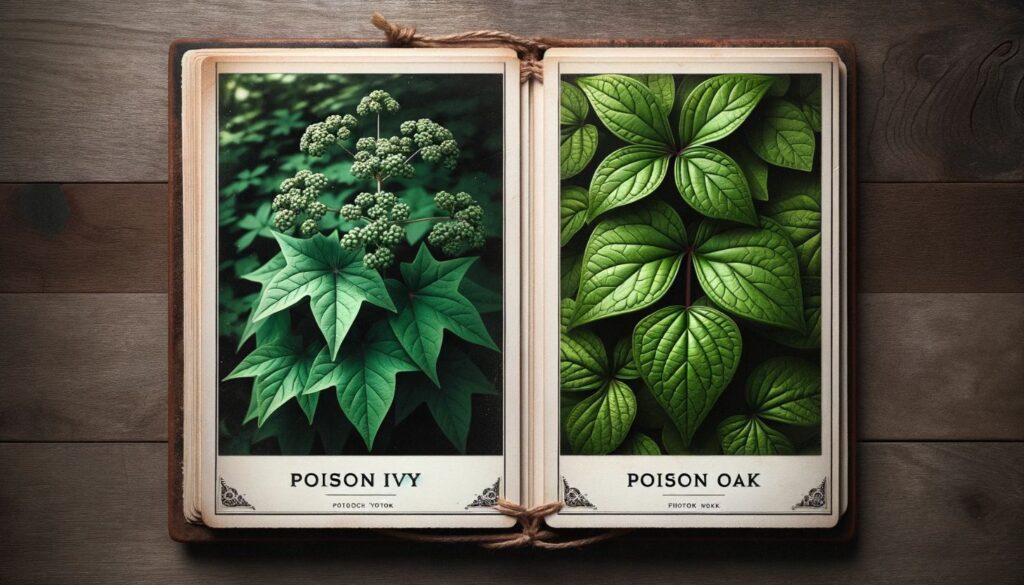
Deadly Nightshade
Deadly nightshade, also known as belladonna, is a highly poisonous plant that can cause hallucinations, delirium, and even death if ingested. The plant has glossy leaves and produces small, black berries that resemble cherries. The berries and leaves contain a toxin called atropine, which can cause severe health problems if consumed. Avoid this plant at all costs.
Poison Hemlock
Poison hemlock is a biennial plant that grows tall, with clusters of small white flowers at the top. The stems are hollow and have purple spots. The plant produces a toxin called coniine, which can cause respiratory failure and death if ingested. It’s essential to be able to identify this plant and avoid it.
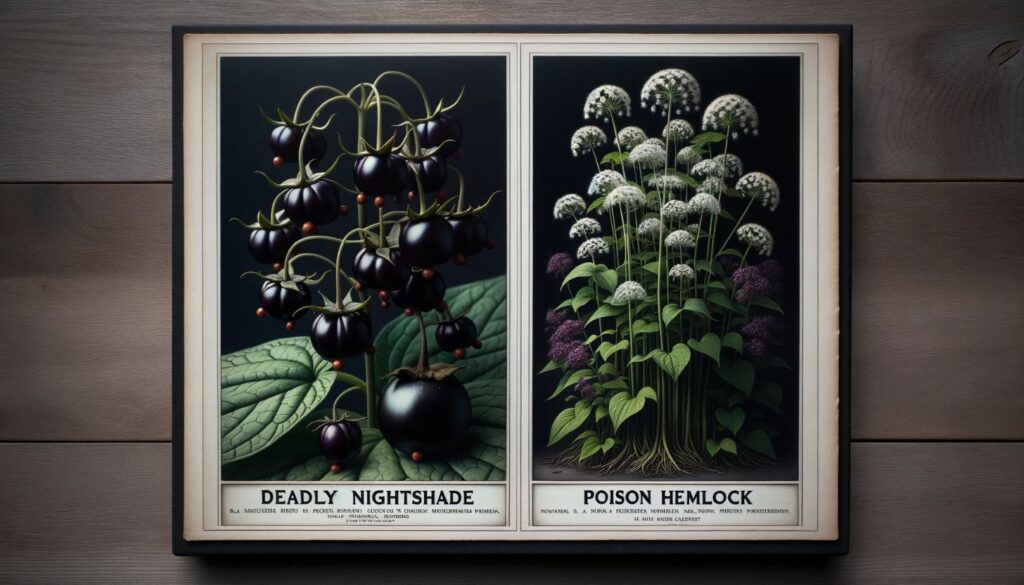
These are just a few examples of the many poisonous plants that can be found in the United States. It’s important to do your research and learn as much as possible about the plants in your area before foraging for wild edibles. When in doubt, if you’re unsure about a plant’s safety, it’s best to err on the side of caution and avoid it. Remember to also wear protective clothing, gloves, and closed-toe shoes to minimize the risk of exposure to poisonous plants.
Tools and Equipment for Foraging Success
Being properly equipped is essential for a successful foraging experience. Here are some tools and gear that you may find useful:
- Field guides: These can help you identify edible plants and distinguish them from poisonous ones. Look for guides specific to your region or the area you will be foraging in.
- Harvesting tools: Depending on what you plan to forage, you may need a variety of tools such as scissors, pruning shears, a digging tool, or a mushroom knife.
- Containers: Bring containers to collect your wild edibles. Consider using a cloth bag for mushrooms, a plastic container for berries, or a basket for larger items like leafy greens.
- Protective gear: Foraging can come with some risks, such as exposure to poison ivy or ticks. Be sure to wear long pants, sturdy shoes, and gloves while foraging.
- First aid kit: Accidents can happen while foraging, so it’s always a good idea to bring a small first aid kit.
When it comes to foraging gear, less is often more. Bring only what you need, and avoid overloading your backpack or gear bag. This will make foraging more comfortable and ensure that you have the mobility you need to navigate the terrain.
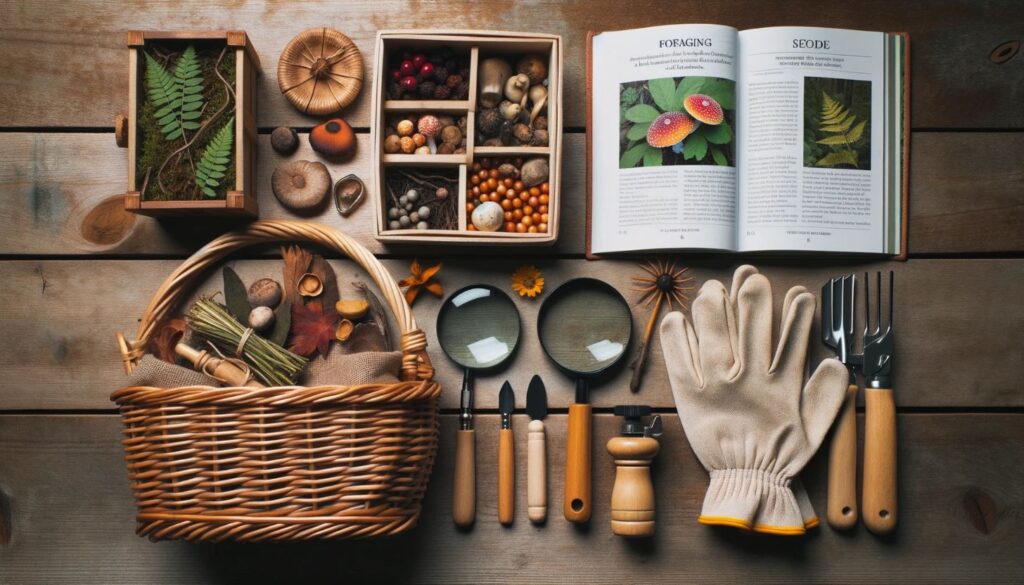
Sustainable Foraging Practices: Ethics and Conservation
Foraging for wild edibles can be a fun and rewarding experience, but it’s important to practice responsible harvesting techniques to protect the environment and preserve resources for future generations. As you begin your foraging journey, keep these ethical considerations in mind:
- Never take more than you need. Only harvest what you plan to use and leave enough behind for the plants and animals that depend on them.
- Harvest in a way that doesn’t harm the plant. Avoid damaging the roots or taking too much foliage from a single plant.
- Respect private property. Always ask permission before harvesting on someone else’s land, and never take from protected areas like national parks or wildlife refuges.
- Use sustainable harvesting techniques. For example, with mushrooms, cut the stem instead of pulling it out of the ground to allow for regrowth.
In addition to these ethical considerations, it’s important to respect the environment and take steps to minimize your impact when foraging. This includes packing out all garbage, avoiding trampling on delicate plant life, and staying on designated trails when possible.
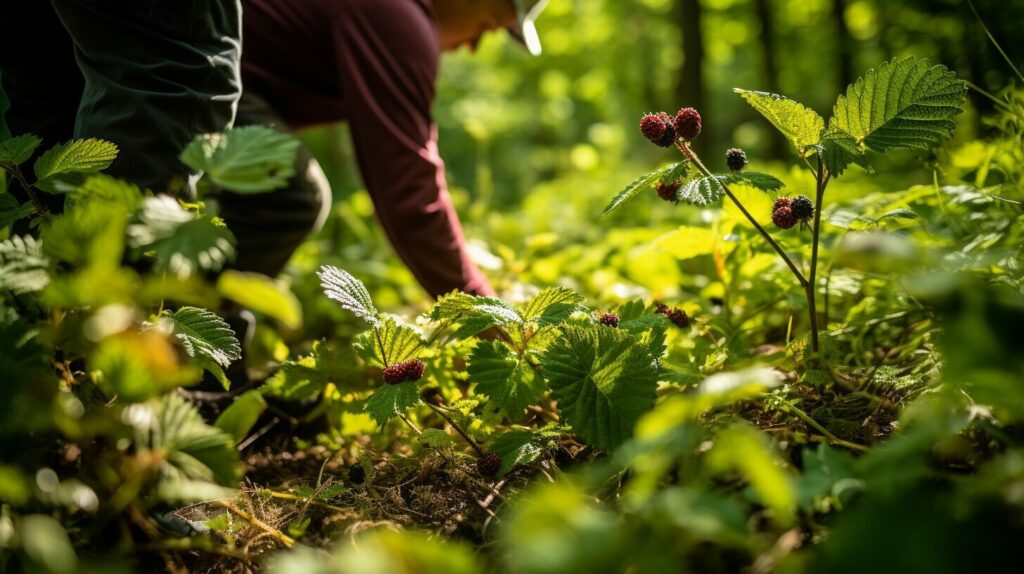
By following these guidelines and practicing sustainable foraging practices, you can enjoy the benefits of foraging while also respecting the natural world. Remember, foraging is a privilege, not a right, so treat the environment with the care and respect it deserves.
Foraging with Confidence: Learning from Experts
Learning from seasoned foragers and experts in the field can take your foraging skills to the next level. From identifying rare species to discovering new recipes, connecting with other foragers can broaden your knowledge and enhance your foraging experience.
One way to connect with local foragers is to join a foraging group or attend a workshop. These resources can provide hands-on experience and allow you to learn from experienced foragers in your area.
Online communities can also be a valuable resource for learning and connecting with other foragers. From Facebook groups to forums and blogs, there are many online platforms where foragers can share their knowledge and expertise. Look for groups or forums specific to your area for the most relevant information.
Remember, foraging is an ongoing learning experience and it’s important to approach it with an open mind. By connecting with experts and other foragers, you can continue to expand your knowledge and develop your skills.
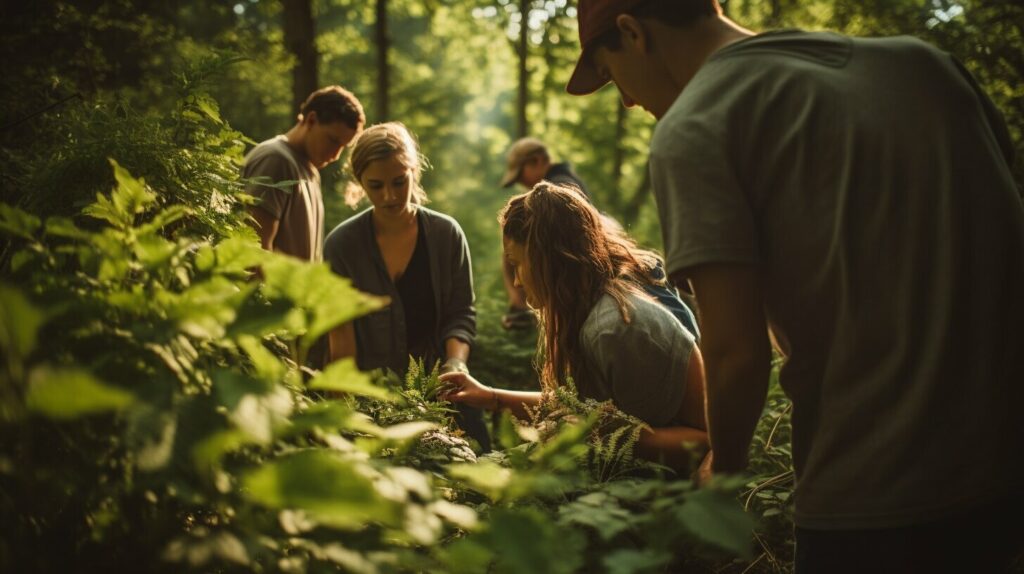
Foraging in the US can be a rewarding experience, both for the food it provides and the connections it can create.
Wild Food in the Kitchen: Recipes and Culinary Tips
Now that you’ve successfully identified and harvested wild edibles, it’s time to get creative in the kitchen. Wild food can add unique flavors and new dimensions to your meals. Here are some recipes and culinary tips to help you make the most of your foraged ingredients:
Wild Mushroom Risotto
Ingredients:
- 1 cup Arborio rice
- 4 cups chicken or vegetable broth
- 1/2 cup white wine
- 1/2 pound wild mushrooms, chopped (such as chanterelle, morel, or porcini)
- 1/4 cup grated parmesan cheese
- 2 tablespoons butter
- 2 tablespoons olive oil
- Salt and pepper to taste
Instructions:
- In a saucepan, heat the broth until it simmers.
- In a separate pan, heat the olive oil and butter over medium heat. Add the chopped mushrooms and sauté for 5-7 minutes until they are tender and brown.
- Add the Arborio rice to the pan and stir until it is coated with oil and butter.
- Add the wine and let it simmer until it is absorbed by the rice.
- Add a ladleful of hot broth to the rice and stir gently until it is absorbed. Continue adding broth, one ladleful at a time, while stirring gently until the rice is cooked al dente.
- Add the grated parmesan cheese and stir until it is melted and combined with the rice.
- Season with salt and pepper to taste.
Enjoy your delicious wild mushroom risotto!
Foraged Berry Compote
Ingredients:
- 2 cups mixed wild berries (such as blackberries, blueberries, raspberries, and strawberries)
- 1/2 cup sugar
- 1/4 cup water
- 1 cinnamon stick
- 1 teaspoon lemon juice
Instructions:
- In a saucepan, combine the berries, sugar, water, and cinnamon stick.
- Bring the mixture to a boil, stirring occasionally.
- Reduce the heat to low and simmer for 15-20 minutes until the berries have broken down and the mixture has thickened.
- Remove the cinnamon stick and stir in the lemon juice.
- Let the compote cool and serve over ice cream, pancakes, or toast.
Enjoy your sweet and tangy foraged berry compote!
Remember to always properly identify and clean your wild edibles before consuming them. Happy foraging!
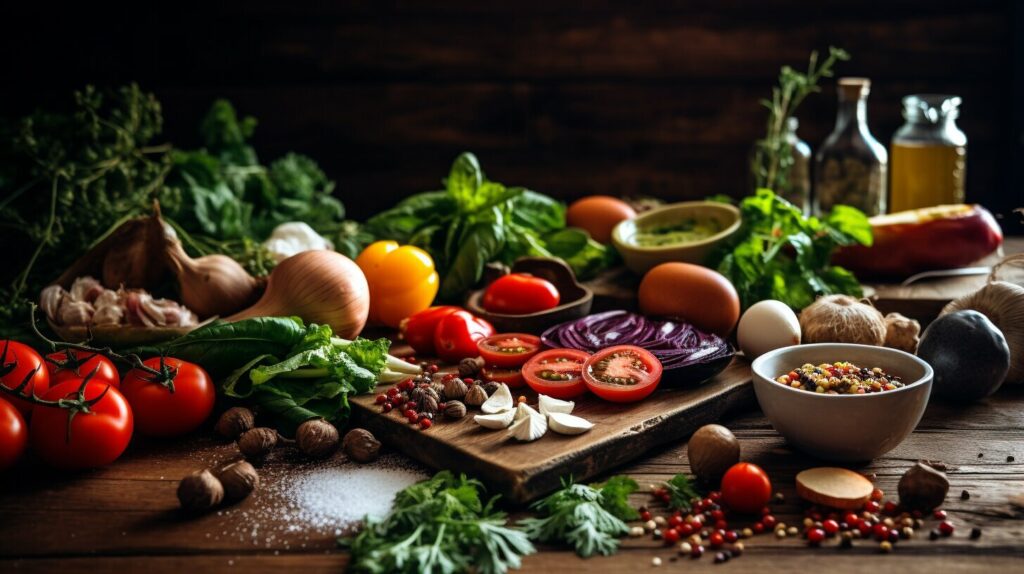
Lesser-Known Wild Edibles
While there are plenty of well-known wild edibles in the US, there are also lesser-known species that are equally delicious and nutritious. Here are a few hidden gems to look out for:
| Wild Edible | Description | Tips for Identification |
|---|---|---|
| Burdock Root | Burdock is a mild-flavored root vegetable that can be eaten raw or cooked, and is commonly used in Asian cuisine. | Look for the large, broad leaves and purple, thistle-like flowers. The root is long, slender, and brownish-black in color. |
| Mallow | Mallow leaves have a mild, spinach-like flavor and can be used in salads, soups, and stir-frys. The plant also produces small, edible fruit. | The leaves are heart-shaped and have a slightly fuzzy texture. The plant produces small white or pink flowers. |
| Wild Garlic | Wild garlic has a pungent, garlicky flavor and is a great addition to savory dishes. The entire plant is edible, from the bulbs to the leaves and flowers. | Look for long, slender leaves that smell strongly of garlic when crushed. The plant produces white, star-shaped flowers. |
Remember to always properly identify any wild edible before consuming it. Use a field guide or bring along an experienced forager to help you learn more about these hidden gems.
Burdock, Mallow, and Wild Garlic
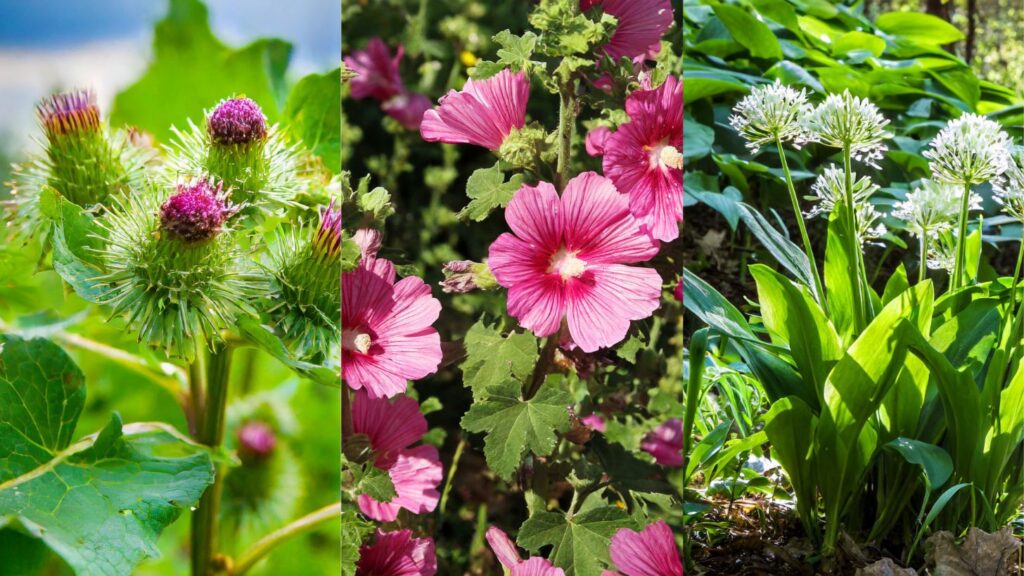
Conclusion
Learning to identify wild edibles in the United States can be an incredibly rewarding experience. Not only can it enhance your outdoor adventures and provide a deeper connection to the natural world, but it can also provide a sustainable source of fresh, nutritious food.
By following the tips and tricks outlined in this guide, you can confidently forage for wild edibles while minimizing your impact on the environment. Remember to always practice ethical foraging techniques and educate yourself on the potential dangers and poisonous plants.
Whether you’re a seasoned forager or just starting out, there are countless benefits to exploring the world of wild edibles. So what are you waiting for? Get out there and start identifying the many delicious and nutritious plants that nature has to offer!
Happy foraging!
FAQ
How can I identify wild edibles in the United States?
Identifying wild edibles in the United States can be done through careful observation and research. It’s important to study field guides, consult with experts, and attend workshops or classes to learn about different plant species and their identifying characteristics.
Are all wild plants safe to eat?
No, not all wild plants are safe to eat. It’s crucial to properly identify edible plants and differentiate them from poisonous species. Always err on the side of caution and consult reliable sources for accurate plant identification before consuming any wild edibles.
Can I forage for food anywhere in the US?
While foraging can be done in various locations across the US, it’s important to respect private property rights and obtain permission before foraging on someone else’s land. Additionally, be mindful of protected areas and national parks that may have regulations against foraging.
What are some common edible plants found in the United States?
Some common edible plants found in the United States include dandelions, blackberries, wild onions, ramps, and wild violets. It’s important to properly identify these plants and ensure they are free from contamination before consuming.
How can I ensure the safety of the wild edibles I forage?
To ensure the safety of wild edibles, always forage from areas that are free from pollution, pesticides, and other contaminants. Avoid foraging near roadsides, industrial areas, or places where chemical treatments may have been applied. Wash thoroughly and cook wild edibles whenever possible.
What tools and equipment do I need for foraging?
Essential tools and equipment for foraging include a reliable field guide, a sharp knife or pruners for harvesting plants, a basket or bag for collecting, and gloves to protect your hands. It’s also helpful to carry water, snacks, and insect repellent when venturing into the wild.
How can I forage sustainably and ethically?
Foraging sustainably and ethically involves practicing responsible harvesting techniques. Only take what you need, leave some for wildlife and other foragers, and avoid damaging plants or their habitats. Respect local regulations and guidelines for foraging to ensure the long-term preservation of wild edibles.
Where can I learn more about foraging from experts?
To learn from experts in the field of foraging, consider joining local foraging groups, attending workshops or classes, and participating in online communities dedicated to wild edible plants. These resources can provide valuable knowledge, tips, and experiences shared by seasoned foragers.
Are there any recipes available for cooking with wild edibles?
Yes, there are numerous recipes available for cooking with wild edibles. From salads and soups to teas and desserts, wild edibles can be incorporated into a wide range of dishes. Look for cookbooks, online resources, and blogs dedicated to wild food recipes for inspiration.
Are there any lesser-known wild edibles that I should be aware of?
Yes, there are many lesser-known wild edibles that offer unique flavors and nutritional benefits. Some examples include nettles, cattails, purslane, and chickweed. It’s always exciting to explore these hidden gems and expand your repertoire of wild edibles.
